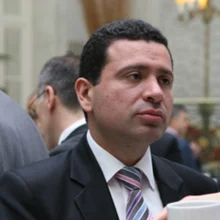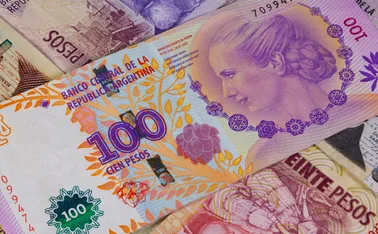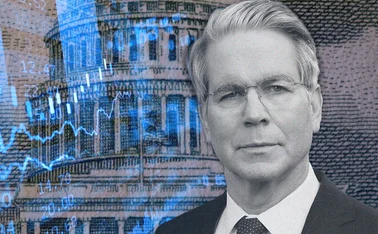
Have equities passed the Covid-19 test?
Reserve managers face major rebalancing and asset allocation challenge

The Covid-19 crisis has tested international reserves portfolios worldwide. For institutions that adopted equities over the past few decades, especially after the global financial crisis, this has represented an additional challenge. The great lockdown has been the first major test of financial as well as institutional resilience of equities as a reserves asset.
During this time, most reserve managers have shied away from de-risking, preserving their asset allocations and have instead counted on the support of the Federal Reserve, which has provided unprecedented support to stabilise financial markets.
As the true magnitude of coronavirus pandemic – and what it could mean for the global economy – became apparent in late February, investors started to retreat from riskier assets, unleashing a sharp correction in equity markets. The S&P 500 declined by 34%, from 3,386 points on February 19 to 2,237 on March 23.
“This was a pretty severe testing of our ability to manage risky assets in a less friendly environment, and with quite dramatic drawdowns in a short period for both equities and corporate bonds,” says Andrew Abir, deputy governor of the Bank of Israel.
Due to the increase of its reserves over the past two decades, the Israeli central bank has had less need for asset liquidity, and increased its focus on returns. As a result, it adopted non-traditional assets and started investing in equities in 2012. In 2019, its reserves asset allocation was 15.1% in equities, and 64.9% in government assets, 11.8% in spread assets and 7.7% in corporate bonds. Since adopting equities, Israeli reserves have risen from around $75 billion to $142.5 billion in May 2020.
“In all this time when we’ve been building riskier assets, we haven’t really faced a major drawdown. The one possible exception was 2018, but then it happened towards the end of the year, when we had already built up a fairly decent return and then equities corrected,” says Abir. “This time, the correction took place right at the beginning of the year. We hadn’t built up any sort of cushion of decent returns before the correction.”
Although the central bank has lost on its equity investments, its reserves portfolio has actually risen over recent months. This is because the Israeli government has raised dollar funds abroad, which it has sold to the central bank to finance a larger-than-expected budget deficit.
Other equity holders among official institutions, however, have recorded sharp overall losses due to the market correction. For instance, Hong Kong’s Exchange Fund, which defends the Hong Kong dollar’s peg to the US dollar, recorded its largest quarterly loss on record in the first quarter of 2020. Its total assets declined by HK$86 billion (US$11.1 billion), to slightly more than HK$4 trillion.
This was a pretty severe testing of our ability to manage risky assets in a less friendly environment
Andrew Abir, Bank of Israel
During the same period, the Swiss National Bank lost a record Sfr38.2 billion ($40.3 billion), with equity price falls accounting for Sfr31.9 billion in losses. The SNB first bought equities in 2005, allocating 9% of its portfolio to them. Now, equities represent 20% of the $824 billion reserve portfolio.
In spite of this difficult environment, the Bank of Israel faced no real pressure to sell riskier assets, says Abir, who previously ran its markets department. “We’ve been trying to educate both the board at the central bank and the public that any evaluation of the performance of the reserves should be done not over a one-year horizon but over a three-year horizon,” he adds.
This institutional resilience played an important role in allowing officials to remain relatively calm during the market stresses, and reflected some lessons learned from the financial crisis.
“The main takeaway is that central banks don’t need to contribute to corrections in prices,” says Isabelle Mateos y Lago, deputy head of BlackRock’s Official Institutions Group. “And that’s frankly an encouraging lesson that seems to have been learned compared to the 2008 crisis, where a number of reserve managers essentially followed the herd and de-risked aggressively.”
Nonetheless, a major external actor was key in providing prompt support to reserve managers.
Fed to the rescue
As the February market shock gathered further steam in March, the Federal Reserve stepped in to make sure abruptly deteriorating financing conditions did not create a vicious downward spiral in the real economy.
On March 15, in an unscheduled meeting, the US central bank cut its federal funds rate to 0-0.25% and launched a $700 billion quantitative easing programme, $500 billion in Treasuries purchases and $200 billion in agency mortgage-backed securities. As liquidity shortages became increasingly apparent, and equities kept falling, the Fed announced unlimited Treasury purchases on March 23.

That day, US equity markets bottomed out, starting a three-month expansion that seems at odds with the major economic crisis unleashed by measures to contain Covid-19. These interventions have dramatically boosted liquidity, boosting the Fed’s balance sheet from $4.3 trillion on March 11 to $7 trillion on June 24.
Furthermore, on June 15, the Fed said it would start buying individual corporate bonds under its Secondary Market Corporate Credit Facility, which had previously only bought exchange-traded funds. By June 25, the S&P had risen by 37.8% from its Covid-19 trough, closing at 3,083 points.
“The Fed interventions have been unprecedented, particularly the fact that they went beyond what they had done during the global financial crisis,” says Marco Ruiz, engagement manager for the Reserves Advisory & Management Parternship (Ramp) at the World Bank Treasury. “In particular, purchasing non-traditional assets for monetary policy, corporate bonds, high-yield bonds, has created a very strong support for the market. This has stabilised the market in the short term; liquidity distortions were very significant.”
Negative side effects
Nonetheless, the Fed’s interventions may generate new problems for reserve managers, especially in their fixed income investments. It looks set to reinforce and deepen the low-yield environment, forcing central banks to study new diversification strategies and asset allocations. It is also artificially influencing market prices.
“One of the costs of these interventions is the distortions in prices. For government bonds, Treasuries, rates are extremely low,” says Ruiz. “We’re seeing numerous discussions among our members about the future; in this context how strategic asset allocations should be regarding, in particular, duration. Now 10-year Treasury yields are at 60-70 basis points [68bp on June 25].”
The concern is that extending the maturity of Treasury investments – a tactic frequently used in the past – may not pay off.
Despite ever-lower yields along the curve, Mateos y Lago stresses the resilience offered by Treasuries. “It is still the case that if you had been invested in a 50-50% portfolio of equities and US government bonds, you would have made money in March,” she says. Although there’s a limit beyond which low yields may be untenable. “It’s very clear that for those government securities that are already yielding negative [10-year German bunds stood at -0.47% on June 26], there’s only so much more price appreciation that you can get from them,” she adds.

But some asset managers, insurance companies and pension funds may decide not to buy negative-yielding sovereign bonds, says Sandro Streit, head of asset management at the SNB.
“Now they’re able to buy double A or a single A credit with positive yields in Switzerland, which was unseen in the last few years,” says Streit. “Selling government bonds and going into corporate bonds was probably one of the reasons why issuance increased sharply to new records. In 2008 and 2009 there was no one willing to buy these bonds, but now there’s a lot of investor demand to get a much higher yield,” he adds.
Beyond fixed income, the Fed’s actions also affect other asset classes. “MBS [mortgage-backed securities] are still attractive, but we know the Fed is stepping in very strongly into this market as well,” points out Ruiz. “The capacity to assess the value of some assets is challenging in this environment.”
This may increasingly be the case for corporate bonds and equities, too. “Corporate bonds are rising because the Fed is buying them, and equities have rebounded partly because investors know the Fed is buying corporate debt, and it’s doing everything it can to stabilise some markets,” adds Ruiz.
The SNB’s Streit acknowledges it helps to see central banks intervening. However, he adds “if you look at primary market activities, these came back in mid-March, before any of these announcement from central banks around March 23 [the ECB unveiled its Pandemic Emergency Purchase Programme on March 19]”, says Streit. “I guess the announcements led to the rebounding equity market, but if you just look at primary market activity, this was even prior to that.”
The central role played by the Fed may prompt reserve managers to wonder for how long it will intervene. “From the QE experience, we know the Fed won’t step out of the market in a disorderly manner. But there’re still pending questions. What’s the real market price of these asset classes is a relevant question for asset managers,” says Ruiz at the World Bank.
Rebalancing act
Once the equity market correction passed, the question for reserve managers was whether and how they should buy more equities to top up their target level as a share of total reserves.
“When should you buy back in to building up to your target level? I think this is one of the things we found more difficult to do, because when markets are falling very quickly you’re very reluctant to come in there and buy in those risky assets to bring your allocation back up to where your target level was,” says Bank of Israel’s Abir. “It’s a tricky process to manage. And even today I think there is a reluctance to continue to add equities to bring us back to the 15% level, because there’s a natural reluctance or doubt about how stable this correction is going to be.
“Managing this adjustment process has been just as challenging as managing the initial shock around the falling prices at the beginning of it,” Abir adds.
Other major equity holders struggled rebalancing their equity portfolio. “It was our biggest challenge in March,” says Streit.
When should you buy back in to building up to your target level? I think this is one of the things we found more difficult to do
Andrew Abir, Bank of Israel
“We have about $160 billion in equities, so one percentage point move in the market means we lose $1.6 billion of equity value,” points out Streit. “We had days like that, and you can basically rebalance and buy $1.6 billion of equities. You can do that in a day. But if you suddenly lose, like, 5%, which is almost like 10 billion of equities, you cannot do that in a day.”
In that environment, the SNB found the market was not liquid enough for it to rebalance fast enough. Although, “in the end, we managed to stay at 20%”, adds Streit. “But any central bank which maybe was in doubt about it probably just didn’t rebalance.”
The Fed’s interventions complicate this rebalancing, because rising equities during a sharp recession amid high levels of economic uncertainty may make equities look overvalued.
“Most people didn’t see the rebound in equities that we’ve seen since April. Probably they expected things to get worse,” says the World Bank’s Ruiz. “If you look at economic data, corporate earnings have gone down very sharply. Does it mean equity values are overvalued? Not necessarily,” he adds. “We’ve also seen a rebalancing within equities more towards sectors that are gaining from this situation – technology for example.”
Looking beyond the current crisis, Ruiz stresses reserve managers should focus on defining their long-term objectives, and whether they still make sense.
“In general we could say that for most institutions, particularly long-term investors, the situation has not changed significantly,” he adds. “There might be issues related to value, there might be another correction, or equities will keep on going up. Rather than thinking about opportunistic strategies, institutions should focus on strong rebalancing rules as long as they are still consistent with this environment.”
Only users who have a paid subscription or are part of a corporate subscription are able to print or copy content.
To access these options, along with all other subscription benefits, please contact info@centralbanking.com or view our subscription options here: subscriptions.centralbanking.com/subscribe
You are currently unable to print this content. Please contact info@centralbanking.com to find out more.
You are currently unable to copy this content. Please contact info@centralbanking.com to find out more.
Copyright Infopro Digital Limited. All rights reserved.
As outlined in our terms and conditions, https://www.infopro-digital.com/terms-and-conditions/subscriptions/ (point 2.4), printing is limited to a single copy.
If you would like to purchase additional rights please email info@centralbanking.com test test test
Copyright Infopro Digital Limited. All rights reserved.
You may share this content using our article tools. As outlined in our terms and conditions, https://www.infopro-digital.com/terms-and-conditions/subscriptions/ (clause 2.4), an Authorised User may only make one copy of the materials for their own personal use. You must also comply with the restrictions in clause 2.5.
If you would like to purchase additional rights please email info@centralbanking.com test test test








